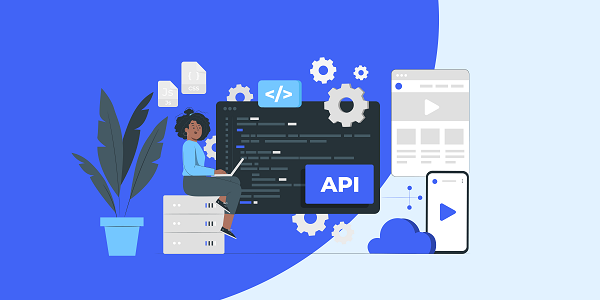Residential Proxies
Allowlisted 200M+ IPs from real ISP. Managed/obtained proxies via dashboard.

Proxies
Residential Proxies
Allowlisted 200M+ IPs from real ISP. Managed/obtained proxies via dashboard.
Residential (Socks5) Proxies
Over 200 million real IPs in 190+ locations,
Unlimited Residential Proxies
Use stable, fast, and furious 700K+ datacenter IPs worldwide.
Static Residential proxies
Long-lasting dedicated proxy, non-rotating residential proxy
Dedicated Datacenter Proxies
Use stable, fast, and furious 700K+ datacenter IPs worldwide.

Web Unblocker
View content as a real user with the help of ABC proxy's dynamic fingerprinting technology.
Proxies
API
Proxy list is generated through an API link and applied to compatible programs after whitelist IP authorization
User+Pass Auth
Create credential freely and use rotating proxies on any device or software without allowlisting IP
Proxy Manager
Manage all proxies using APM interface

Proxies
Residential Proxies
Allowlisted 200M+ IPs from real ISP. Managed/obtained proxies via dashboard.
Starts from
$0.77/ GB
Residential (Socks5) Proxies
Over 200 million real IPs in 190+ locations,
Starts from
$0.045/ IP
Unlimited Residential Proxies
Use stable, fast, and furious 700K+ datacenter IPs worldwide.
Starts from
$79/ Day
Rotating ISP Proxies
ABCProxy's Rotating ISP Proxies guarantee long session time.
Starts from
$0.77/ GB
Static Residential proxies
Long-lasting dedicated proxy, non-rotating residential proxy
Starts from
$5/MONTH
Dedicated Datacenter Proxies
Use stable, fast, and furious 700K+ datacenter IPs worldwide.
Starts from
$4.5/MONTH
Knowledge Base
English
繁體中文
Русский
Indonesia
Português
Español
بالعربية


This article systematically analyzes the selection logic and technical standards of residential IP, and provides a complete decision-making framework from supplier screening to actual scenario adaptation, helping enterprises and individual users avoid risks and achieve cost-effective procurement.
1. Core Value and Definition of Residential IP
Residential IP comes from the home broadband network and is allocated to residential users by the Internet Service Provider (ISP). It has the following irreplaceable advantages:
High concealment: It is difficult for the target platform to identify proxy behavior through IP attributes, and the request success rate is significantly higher than that of data center proxies.
Geographic accuracy: IP addresses are strongly associated with the physical location of the home, and can accurately simulate local user behavior in a specific city or even community.
Long-term availability: The average effective period of high-quality residential IPs is 6-12 months, reducing the operation and maintenance costs of frequent IP changes.
For example, cross-border e-commerce companies can use residential IPs to capture real-time pricing data of competing products in target markets without being identified as robot traffic.
2. Core technical considerations for purchasing residential IP
1. Quality Verification Dimension
IP purity detection: Use third-party tools to verify whether the IP is included in the anti-fraud blacklist and confirm that its ASN belongs to a residential broadband service provider (such as AT&T, China Telecom).
Network performance benchmark: Latency must be less than 150ms to support real-time interactive tasks, and bandwidth stability must be guaranteed to be above 10Mbps to meet video stream capture requirements.
2. Resource management capabilities
Suppliers need to provide at least 5 million active IP pools to support high-concurrency task execution.
The dynamic replacement mechanism should support automatic IP switching based on the number of requests, time thresholds, or risk warnings, such as immediately enabling a backup node when a ban risk is detected.
3. Practical Guidelines for Supplier Evaluation
Technical transparency and compliance
Give priority to service providers that publicly provide proof of IP origin (such as ISP cooperation agreements) and ensure that they comply with data privacy regulations such as GDPR.
Service Scalability
High-quality suppliers should support flexible expansion of IP quantity and coverage area, such as adding residential IP resources in specific cities in Southeast Asia on demand.
Cost Optimization Model
Compared with the cost per thousand requests (the average price of residential IP is $2.5-4/thousand times), long-term contracts can save 15-30% of the cost. At the same time, the effective utilization of IP needs to be evaluated to avoid wasting resources.
Risk control and operation support
Key indicators include real-time ban warning system, automatic IP replacement compensation strategy, and localized service capabilities with multi-language technical support.
4. Adaptation strategies for typical scenarios
Social media multi-account management
An independent static residential IP must be assigned to each account, and the IP geographic location must be consistent with the account registration information to avoid the platform's risk control mechanism.
Cross-border e-commerce data capture
A dynamic residential IP rotation strategy is adopted, combined with request frequency control technology (such as ≤5 requests per minute) to simulate real user browsing behavior.
Streaming content aggregation
Choose high-bandwidth residential IP and use video cache acceleration technology to ensure smooth 4K content capture while meeting copyright area restriction requirements.
Real-time monitoring of financial data
It is necessary to use a static IP with long session persistence and TLS fingerprint obfuscation technology to prevent high-frequency data requests from being identified as abnormal traffic.
5. Risk Control and Long-term Optimization
Grayscale verification mechanism
Newly purchased IPs must undergo a testing period of at least 72 hours to monitor the ban rate (threshold <5%) and response stability (fluctuation range <20%).
Hybrid proxy Strategy
High-value tasks use residential IPs, and routine tasks are switched to lower-cost data center proxies, with automatic switching achieved through an intelligent routing system.
Lifecycle Management
Establish an IP health database, eliminate nodes with a failure rate greater than 20% for three consecutive days, and regularly add new IP resources.
6. Future Technology Evolution Direction
Intelligent resource scheduling
Use AI to predict the probability of IP expiration and implement proactive replacement strategies, such as training risk prediction models based on historical ban records.
Decentralized Network
Explore the P2P residential IP sharing model based on home routers, use blockchain technology to record IP usage traces, and improve resource transparency.
5G Converged Applications
Combined with network slicing technology, exclusive frequency bands are allocated for proxy services, compressing the latency of cross-border requests to less than 10ms, meeting the needs of sensitive scenarios such as high-frequency trading.
As a professional proxy service provider, abcproxy provides residential IP resources covering 200+ countries, supporting city-level positioning and operator screening. If you need to build a highly anonymous and highly available network access system, you can learn more about its customized solutions.
Featured Posts
Popular Products
Residential Proxies
Allowlisted 200M+ IPs from real ISP. Managed/obtained proxies via dashboard.
Residential (Socks5) Proxies
Over 200 million real IPs in 190+ locations,
Unlimited Residential Proxies
Use stable, fast, and furious 700K+ datacenter IPs worldwide.
Rotating ISP Proxies
ABCProxy's Rotating ISP Proxies guarantee long session time.
Residential (Socks5) Proxies
Long-lasting dedicated proxy, non-rotating residential proxy
Dedicated Datacenter Proxies
Use stable, fast, and furious 700K+ datacenter IPs worldwide.
Web Unblocker
View content as a real user with the help of ABC proxy's dynamic fingerprinting technology.
Related articles

Why do you need a dedicated proxy IP to buy shoes on SNKRS
This article analyzes the core role of dedicated proxy IP in SNKRS snap-ups, explores how to improve the success rate through proxy IP technology, and introduces how abcproxy provides professional solutions for sneaker enthusiasts.

How to search for Taobao products through pictures
This article analyzes the implementation logic of Taobao's image search technology, explores practical methods to improve search efficiency, and explains the application value of proxy IP services in e-commerce data collection, and recommends abcproxy professional proxy solutions.